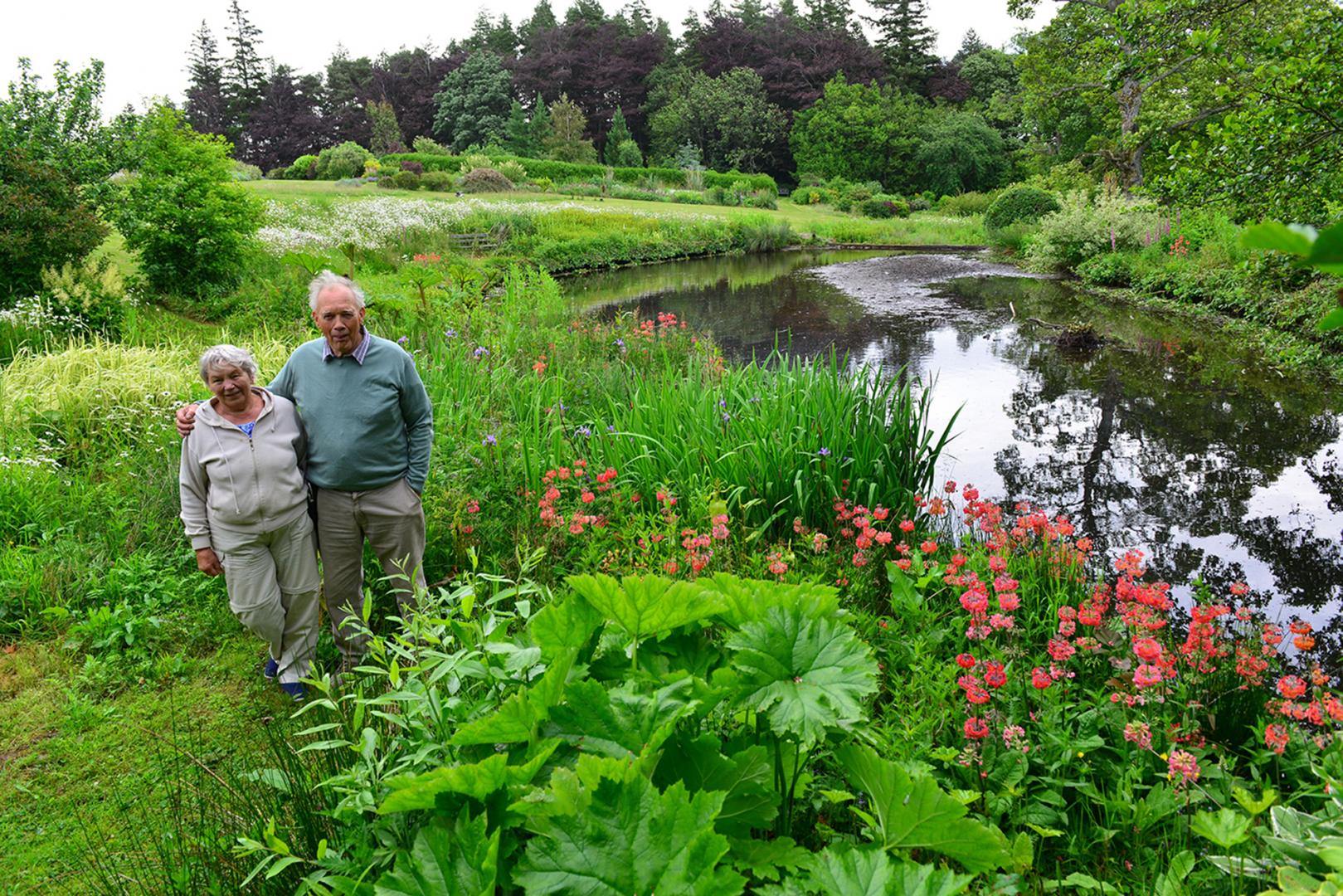A THREE-acre wild garden in Cotherstone will welcome visitors next month.
David and Maureen Atkinson are opening their Pinner’s Cottage garden, along Moor Road, on Sunday, July 22, in support of Teesdale and District Lion’s Club.
All cash raised will go to Duchenne Muscular Dystrophy Research.
Their huge garden, with its wide borders and numerous nooks and unique features, is the product of 12 years of development.
Mrs Atkinson said: “The day we were moving in, they were taking the sheep out. It was a field.”
Mr Atkinson added: “I set off with a lawnmower, cut paths out and slowly began planting.”
Today the paths meander all around the garden revealing a wealth of perennials, shrubs and trees of amazing varieties.
Maintaining the pathways takes Mr Atkinson about two-and-a-half-hours on a ride-on mower each week.
Along the routes are numerous places where people can sit to take in views of countryside.
An interesting feature near the beginning of the trail is a ginko biloba tree.
Mr Atkinson said: “It is one of the oldest trees in the world. I planted two and I was told they would not survive. One died but this one is doing quite well.”
Nearby is an oak tree, complete with truffle fungus, that Mr Atkinson bought at the Chelsea Flower Show.
He has helpfully put name tags on many of the trees and some of the unusual ornaments that populate the landscape.
His interest in gardening and plants was gleaned from his wife. He would sell some of her plants when he still owned the Hayloft, in Barnard Castle.
Living at Mount Pleasant at the time, he went on to develop his own poly-tunnels to propagate the plants.
Many of the curious objects he picked up for the Hayloft are now features in the garden, including the fossil of a sigillaria tree which could date as far back as 320million years ago.
He said the fossil was uncovered at Copley open cast mine.
A pond is a dominant feature at the bottom of the garden and is home to two geese, a duck and some water hens.
The former cattle and sheep farmer said: “The water hens are trying to build a nest in the middle, but the geese aren’t happy. They keep trying to destroy it.”
On the far side of the pond Mr Atkinson has fashioned a hide out of willow where people can sit and watch for wildlife.
Considering the wild nature of the garden, there is a lot to see. Mr Atkinson said black grouse, grey partridges, pheasants and hawks are among the animals that visit.
People might also catch a glimpse of the resident white barn owl.
Seating is a significant part of the garden, ranging from an old bench rescued from a skip that is being woven with willow to an old church pew.
Another originally came from a Mersey ferry and was bought in a saleroom.
Mr Atkinson said: “The auctioneer said, ‘I believe the Beatles used to sit on it’ – he made an extra £50 off me.”
Apple trees abound in the garden as do a wide variety of willow.
The willow has been used by Mr Atkinson to create some interesting features including sculptures of a buffalo and a giraffe.
Deeper into the garden he has created a tunnel of willow which is populated by a family of garden gnomes.
To the rear, the wild gardener has planted hundreds of blue iris, which once matured will create “a river of blue” flowing along the property boundary.
Also to the rear is Mr Atkinson’s nursery, where he grows his own cuttings, many of which will be on sale during the open day.
There will also be a book sale and afternoon teas on the day and Barnard Castle Brass Band will provide some entertainment.
Tickets cost £5 and children can enter free of charge.
The garden is open from 11am until 5pm.







